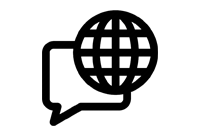What makes a ‘story’? I’m not referring to a simple narrative with beginning, middle and end told for amusement or edification. I’m asking after that much rarer quality — that certain something that newspaper editors whisper mystically about, which transforms an otherwise rather ordinary seeming event into one worth reading about on page 3 of The Daily Telegraph.
For instance, a 24-year-old PhD student, Shelby Judge, goes on a visit to Sterling Castle and takes exception to something she reads in one of those little Mr Men books on sale in the castle gift shop. In the book she flicks through, Mr Clever is patronising Little Miss Curious, who cannot understand why the Forth Bridge is so named. “What happened to the first, the second and the third bridges?” Miss Curious asks. “It was going to be a long day,” sighs the book’s narrator. According to Ms Judge, this story reinforces antiquated gender stereotypes. “It is meant to be a funny joke but then it’s always at the expense of women.” “Mansplaining,” Ms Judge later tweeted, with a picture of the offending page. It was that tweet that went viral and became “a story”.
It was hardly a shocking or surprising comment. Even Telegraph readers cannot have been shielded all their lives from the existence of feminism.
No, it was a story for some simple reasons. First, it provided the opportunity to print some colourful images of Mr Men that worked well to offset all the dreary stuff about the election. Second, it played to the cultural prejudices of its readers — the “po-faced feminist academics taking offence again at a simple bit of fun” attitude. But also — and here, I suspect, is where that deeper and elusive quality of ‘a story’ comes in — it put its finger on one of those cultural anxieties about how we bring up our children, and what moral lessons we are exposing them to. It represents a battle for the ethics of the bedtime story.
Every evening at about half past seven, I settle down to read my three year-old son a succession of bedtime stories. Bathed and in his fire-engine pyjamas, with his warm milk, this is my time with him. He sits on my lap and we get through maybe three or four stories every night. Our current favourite is The Runaway Pea a terrific tale of the adventures of a solitary pea who thinks there must be more to life than ending up on a plate for tea.
Every evening we fire up our imaginations with tales of Vikings who want to make dinosaur stew, Mog the cat hiding on the roof from the Christmas tree, or Harry and Gran and his robots. As I snuggle down with my son and kiss him goodnight, I do not want this moment to become some sort of ideological battleground, the next space to be conquered in the ever-widening gyre of our increasingly rancorous culture wars.

 Main Edition
Main Edition US
US FR
FR






Join the discussion
Join like minded readers that support our journalism by becoming a paid subscriber
To join the discussion in the comments, become a paid subscriber.
Join like minded readers that support our journalism, read unlimited articles and enjoy other subscriber-only benefits.
Subscribe